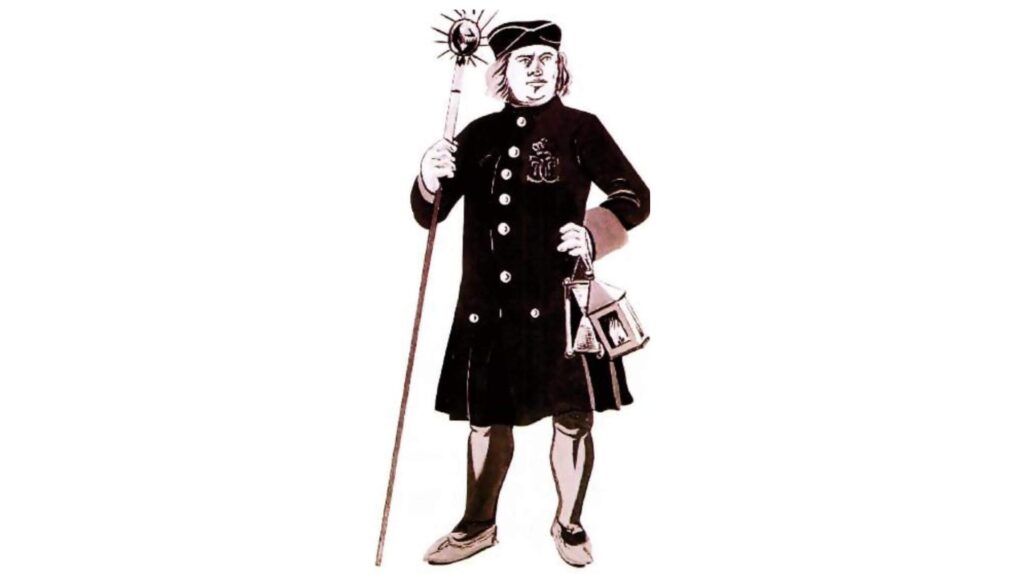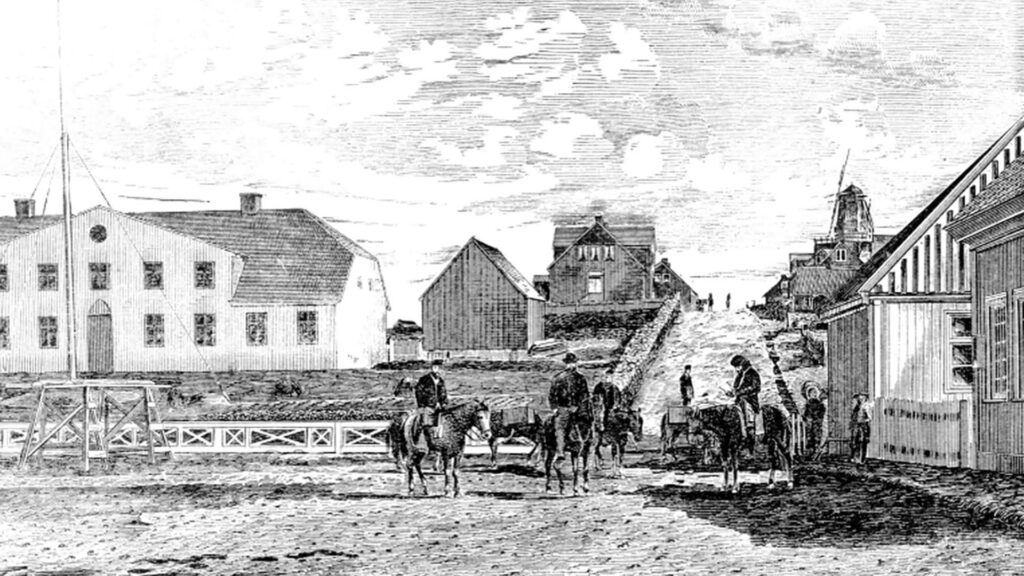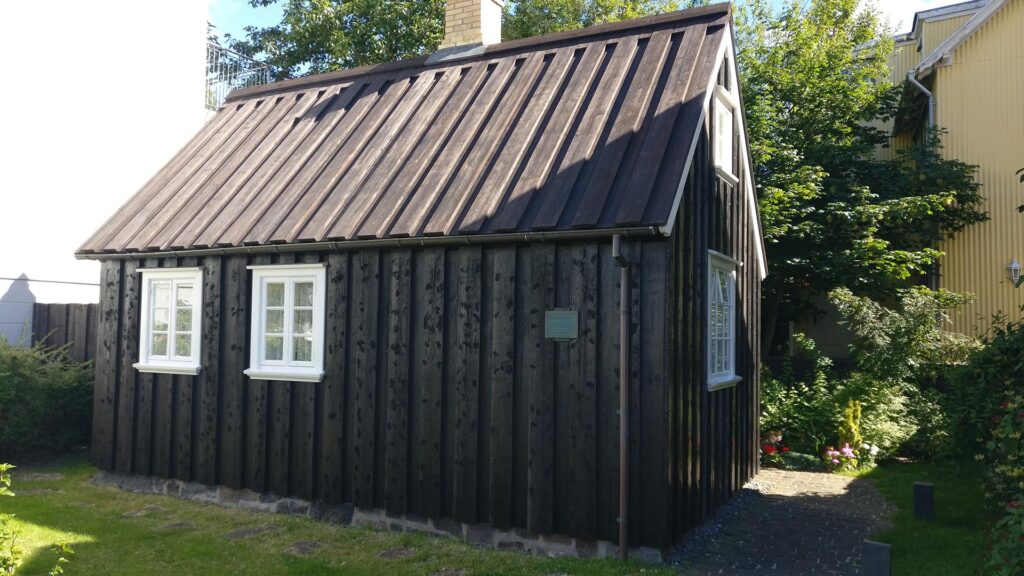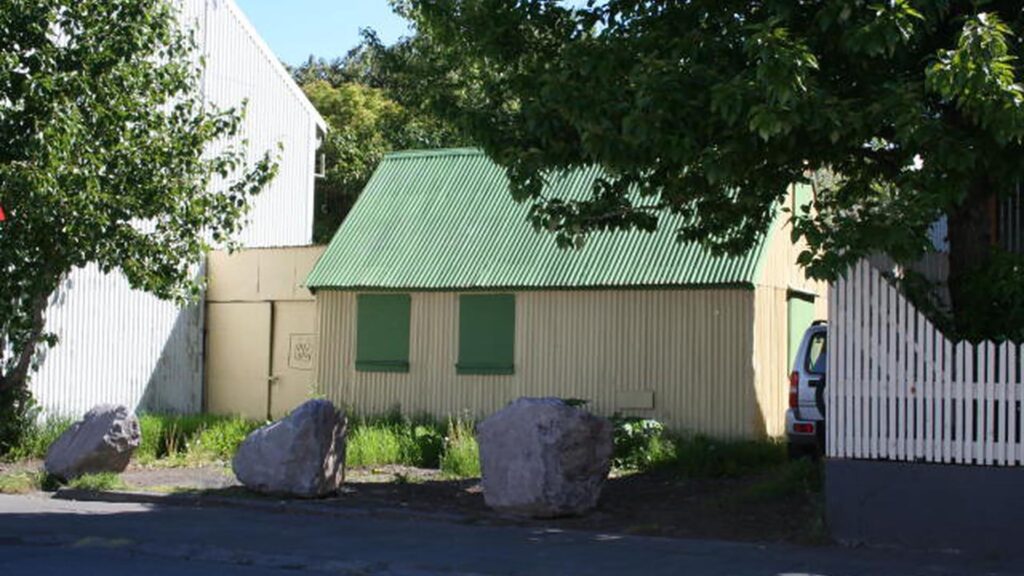Vaktari, or watchman, was a job initially created between 1770 and 1780 in Reykjavík. It was at the initiative of representatives of the New Enterprises company (Innréttingarnar). It is not known precisely when the first watchman started working, but a contract of employment exists from 1778.
What Was the Role of the Watchman?

The role of the watchman was to walk the streets of Reykjavik in the evenings and at night to make sure everything was in order. They carried an hourglass, a lantern, and a stick with a spiked knob, a so-called morning star. Every hour they sang the “watchman’s verse” to let people know everything was safe. This formidable weapon they carried gives an indication that they were intended to deal with and subdue criminals if necessary.
There were twelve watchman’s verses. One for every hour between eight in the evening to seven in the morning.
It is not unlikely that the opening of the jail by Arnarhóll (now the Government building) encouraged officials to hire watchmen. The prisoners didn’t have strict surveillance, and it was common for them to steal food from companies and individuals in town.
Additionally, the increased number of timber houses built meant a greater risk of a fire breaking out.
It wasn’t until 1791 that Reykjavik town hired a night watchman. It can be said that with that, official law enforcement and fire protection began in the capital. The first person to do that job was workingman Magnús Guðlaugsson. To cover the costs of this new job, a tax was levied on all house owners. The amount of the tax was based on the length of their houses.
The First Prison in Iceland

In the mid-18th century, tough times befell Iceland, and about 8000 people died between 1751 and 1758. That was about 12% of the population (from 60.000 down to 52.000 people). Due to those hard times, thievery became a problem nationwide. Many people were sentenced to hard labor in Copenhagen, and the county magistrates had to keep the thieves until there was room for them on a ship to Denmark. This was very costly for the county magistrates.
The magistrates sent the Danish King a letter in 1757 asking permission to hang the men instead of sending them to Copenhagen. It would save quite a bit of money, but the King did not approve. Despite this, the magistrates still hung four thieves.
Two years later, in 1759, a royal decree levied a real estate tax on house owners to cover the cost of building a prison in Iceland. It would also cover the costs of keeping prisoners in custody and transporting them to Denmark. The King would also contribute a fixed sum of money. Then it was decided that convicts would build the prison instead of sending them to Denmark. The prison was opened in 1764, the same year there was a massive fire in the New Enterprises factory buildings.
It is thus possible, as stated before, that the decision to hire a watchman in Reykjavik was made due to the fire and the opening of the prison. It had happened that the convicts had broken into the factory.
The First Policemen of Reykjavik
Reykjavik didn’t get proper police officers until 1803. At that time, according to the governor in West Iceland, law enforcement was nearly non-existent, there were no fire extinguishers, and the watchman in Reykjavik was drunk and unkempt. Criminals were rarely prosecuted or punished for their deeds; people seemed to just settle matters among themselves.
When the Danish authorities got that report, it was decided to send two Danish policemen, Ole Björn and Vilhelm Nolte, to Iceland. One of the reasons Vilhelm was sent to Iceland was because he was also a cobbler and was supposed to work as such alongside his police work. However, he quickly started drinking and was fired a year later. It wasn’t until after 1859 that law enforcement became Icelandic.
As we told you before, in our blog post about the Great Fire in 1915, there were only three police officers in Reykjavik. Moreover, the fire brigade still needed to be improved even if it was over 100 years after that scathing report on crimes in Reykjavik from 1802.
Vaktarabærinn – The Watchman’s Hut

The oldest part of Reykjavik is downtown, called Kvosin (The Dell). The old neighborhood Grjótaþorpið is in that area along with Reykjavik’s second oldest house is there, Aðalstræti 10, constructed in 1761. Originally, it was one of the New Enterprises houses. It is now a part of Reykjavik City Museum and houses the exhibition Reykjavík… and the story continues.

Another house in the Grjótaþorp is the so-called Vaktarabær or Watchman’s Hut. The tiny house stands at Garðarstræti 23 and is the second oldest wooden building in the neighborhood. It was built as storage around 1840, next to the Watchman’s Hut. It is first mentioned in sources when a man called Sigurður Breiðfjörð applied to settle in Reykjavik. The house was converted into a residential building in 1879.
The actual Watchman’s Hut was built of turf and stood where Garðarstræti 25 is now. One of Iceland’s most famous composers, Sigvaldi Kaldalóns, was born in the house on January 13, 1881, and spent his youth there. The house was recently renovated to its original look.
Please signup HERE for our newsletter for more fun facts and information about Iceland!









